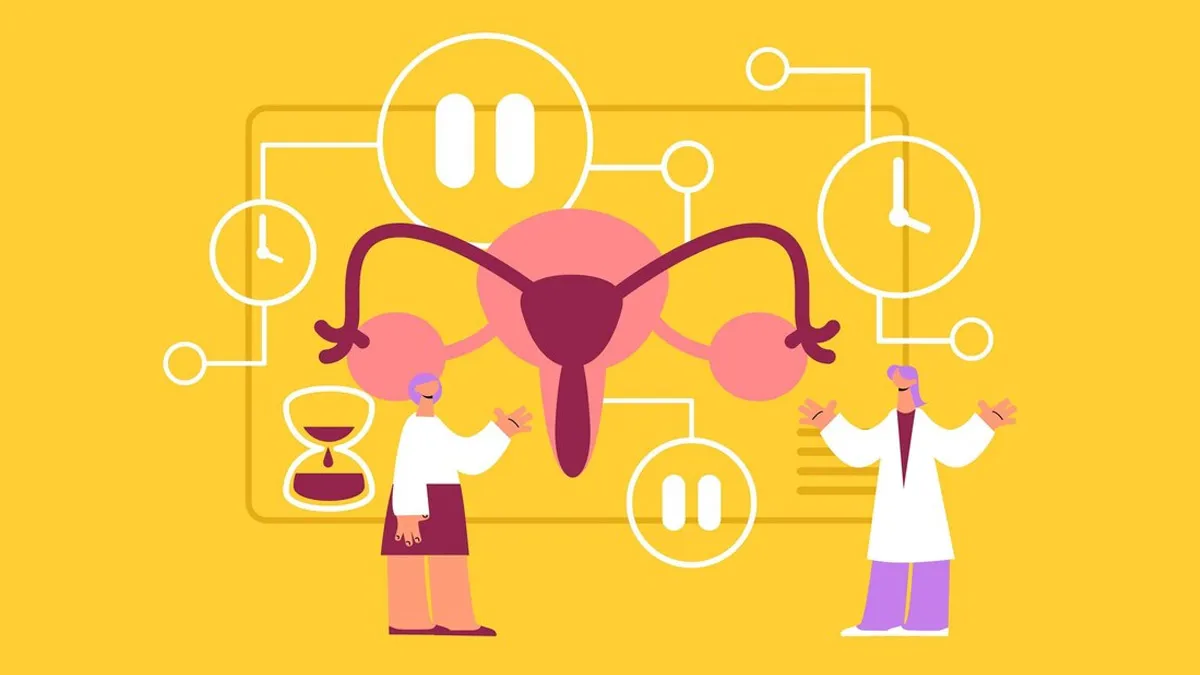
For many women, a regular menstrual cycle feels like a given until it suddenly changes. Missing one or two periods here and there might not raise any alarm, but when you miss three or more consecutive periods, it’s time to pay attention. This is known as secondary amenorrhoea, and it can signal an underlying health issue that requires attention. We spoke to Dr Gandhali Deorukhkar, Consultant - Obstetrics and Gynaecology, Wockhardt Hospitals, Mumbai Central, who explained the causes, symptoms, and treatment options for secondary amenorrhoea to help you regain balance and health.
Table of Content:-
What Is Secondary Amenorrhoea?

According to a 2021 study, secondary amenorrhoea is characterised by the sudden absence of three consecutive menstrual cycles after regular periods have been established, or the absence of menstruation for six months in women with previously irregular cycles.
“It differs from primary amenorrhoea, which refers to the absence of menstruation by age 16. Secondary amenorrhoea often signals an underlying health issue that requires attention,” added Dr Deorukhkar.
Common Causes of Secondary Amenorrhoea
Several factors can contribute to the development of secondary amenorrhoea. Understanding the root cause is crucial to determining the most appropriate treatment.

- Hormonal Imbalances: Conditions, such as Polycystic Ovary Syndrome (PCOS), thyroid disorders, or elevated prolactin levels can disrupt the menstrual cycle.
- Stress and Lifestyle Changes: Emotional stress, excessive exercise, or rapid weight loss can interfere with the hypothalamus, which regulates hormones.
- Medications: Certain medications, like contraceptives or antidepressants, may impact menstruation.
- Reproductive Health Issues: Uterine scarring (Asherman’s syndrome), early menopause, or ovarian dysfunction can also be caused.
Symptoms and Diagnosis

“The primary symptom of secondary amenorrhoea is the absence of periods for three or more consecutive cycles. The underlying cause of the condition, however, may result in additional symptoms for some women. These include weight gain or loss, acne, excess hair growth (particularly on the face), hair thinning, hot flashes, or mood changes,” said Dr Deorukhkar.
To diagnose the cause of secondary amenorrhoea, a healthcare provider will typically begin with a thorough medical history and physical exam. Blood tests to check hormone levels, such as thyroid function and prolactin levels, are often performed. Imaging tests like ultrasounds or MRIs may be used to evaluate the ovaries, uterus, and pituitary gland for any structural abnormalities or issues with organ function. In some cases, a biopsy of the uterine lining may be needed to identify underlying reproductive health problems.
Also Read: How Accurate Are Period Tracking Apps?
Treatment Options
It is important to address the underlying cause of secondary amenorrhoea when treating secondary amenorrhoea. Depending on the diagnosis, several approaches may be used. Here are some listed by Dr Deorukhkar:

- Hormone Therapy: If the condition is caused by hormonal imbalances, Hormone Replacement Therapy (HRT) or birth control pills may be prescribed to regulate the menstrual cycle and restore balance.
- Lifestyle Modifications: Women experiencing secondary amenorrhoea due to stress, excessive exercise, or rapid weight loss may benefit from lifestyle changes. Reducing stress through yoga, meditation, or therapy can help normalise the menstrual cycle. A balanced diet and regular exercise with a focus on overall well-being can also support healthy hormone levels.
- Medications for Underlying Health Conditions: For those with thyroid disorders or elevated prolactin levels, medications that target these conditions may be prescribed to restore regular menstruation.
- Surgical Intervention: In cases where uterine scarring or reproductive health issues like ovarian dysfunction are identified, surgical treatment may be necessary to remove scarring or address the underlying reproductive health concern.
When to Seek Help
Missing periods for three or more months is not something that should be ignored. Secondary amenorrhoea can lead to complications, such as infertility, osteoporosis, or cardiovascular issues if left untreated. Early diagnosis and intervention are essential for restoring normal menstrual cycles and maintaining long-term health. If you notice any signs of secondary amenorrhoea, it is crucial to consult a healthcare provider.
[Disclaimer: This article contains information provided by an expert and is for informational purposes only. Hence, we advise you to consult your professional if you are dealing with any health issues to avoid complications.]
Also watch this video
How we keep this article up to date:
We work with experts and keep a close eye on the latest in health and wellness. Whenever there is a new research or helpful information, we update our articles with accurate and useful advice.
Current Version